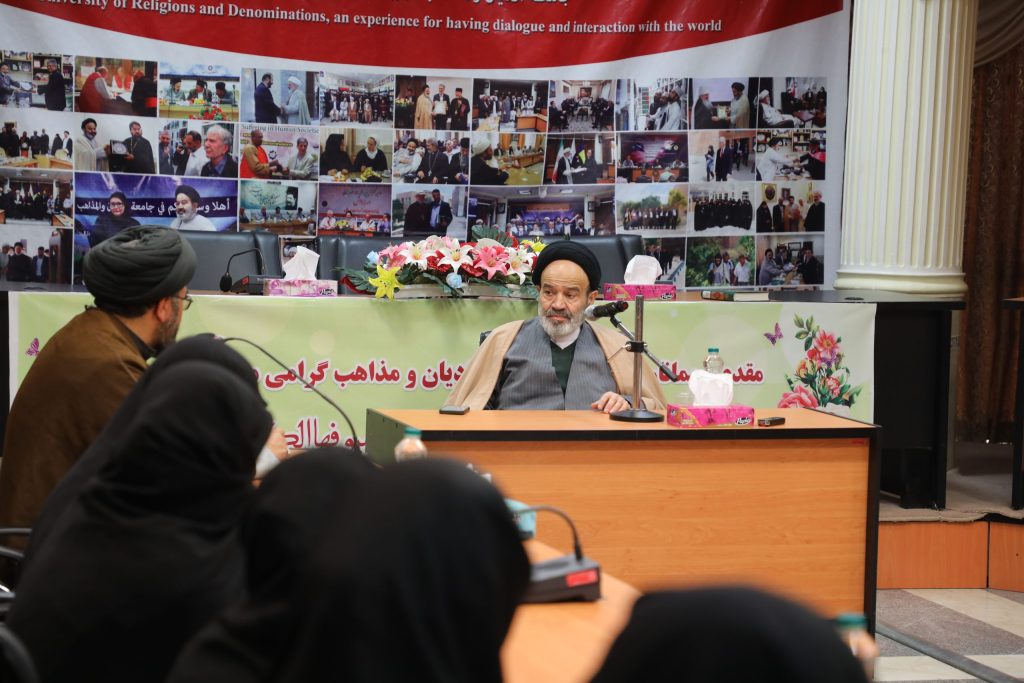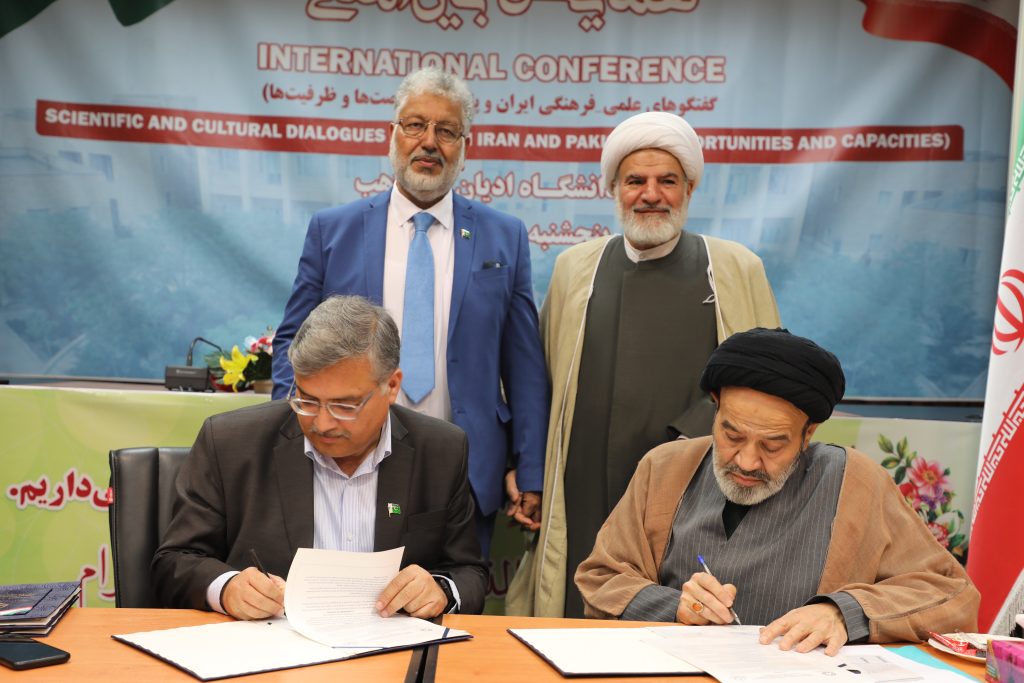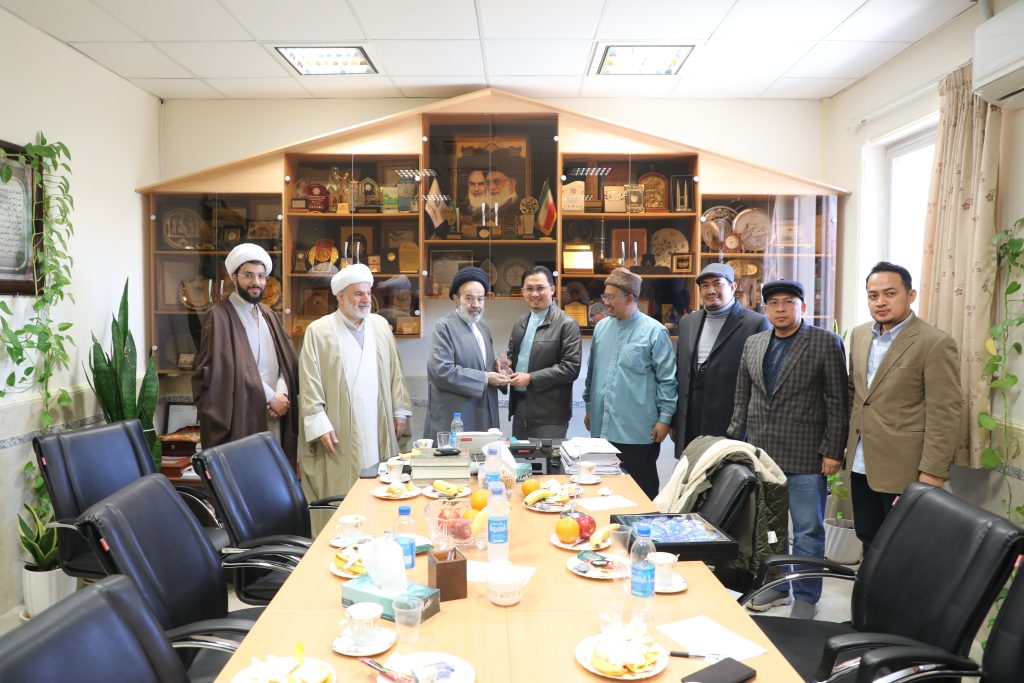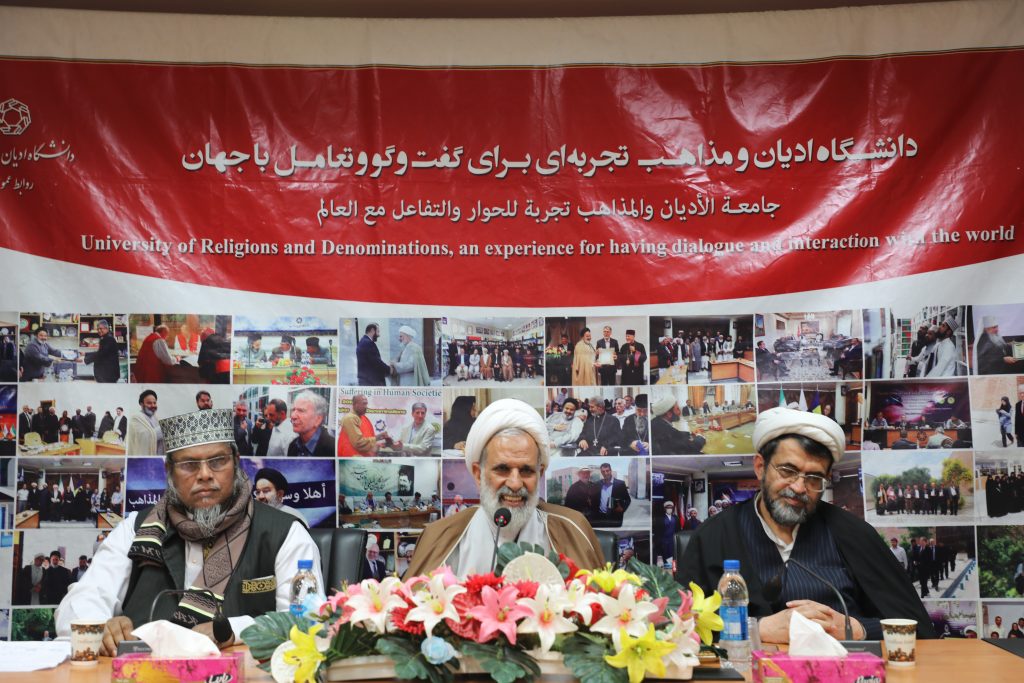My Journey to the Islamic Republic of Iran: Myths and Biases Explained
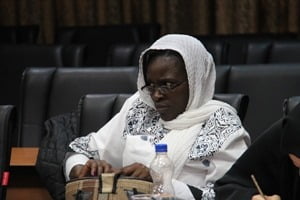
A lot has been said about the Muslims and the Islamic religion. Generally the portrayal is largely negative. My experiences in the Islamic Republic of Iran changed my views and perspectives as I underwent Shia studies course
By
Kudzai Biri[1], Department of religious Studies, Classics and Philosophy, University of Zimbabwe
“No one goes on a journey and comes back empty handed”[2]
Introduction
A lot has been said about the Muslims and the Islamic religion. Generally the portrayal is largely negative. My experiences in the Islamic Republic of Iran changed my views and perspectives as I underwent Shia studies course,[3] interacted and had informal interviews and discussions with Iranians including some female post-graduate students at the University of Religions and Denominations, hereafter, (URD) in Qom. It was a life changing experience for I had first-hand information and was able to interact with Muslims in the four cities of Qom, Esfahan, Kashan and Tehran. My pre-conceived notions were challenged, proved wrong and was surprised to encounter the opposite of some claims against Muslims and the Islamic religion. I do not want to give a picture of the Islamic religion that is monolithic in terms of theological standpoint. Also,I do not claim to understand Muslims and the Islamic religion all over the world. Rather, I document my experiences in the Shiite Islamic Republic of Iran. In order to give a clear picture, there is need to give a brief background of my personal life that will shed light on my encounter with realities in Iran as opposed to media reports.
My Personal background
Growing up in the Manicaland province of Zimbabwe and my strong Christian background shaped my perception of realities. Coming from a strong Christian background, I also had no interaction with Muslims. It is prudent to acknowledge that I never interacted with any Muslim until I enrolled at the University of Zimbabwe, hereafter (UZ) as an undergraduate student. The powerful student Christian Union and my uncompromised commitment to my church at the University as students further confirmed my perception of realities that I had when I was growing up. This concerns views about non-Christians but in this case I focus on the Islamic religion. The image perpetuated in my history studies on West Africa at high school is that of Islam as a militant religion particularly with the jihads (holy wars) in mind. Therefore, cruelty unsympathetic and a ruthless religious movement was the dominant view. This is not surprising given that most of us had not interacted with Muslims or entered a mosque. Moreover, the teachers who taught the history of Islam had the same backgrounds with their students, for both were outsiders.
It is therefore prudent to acknowledge that I heard (just like many others) a lot of stories about Muslims that somehow led to some sentiments of anti-Islam and to some extend hatred because “they want to establish an Islamic caliphate in the whole world by force.” In some Pentecostal sermonic discourses, Islam represented the anti-Christ foretold in the book of Revelations.[4]As a University professor, I had a quest to establish the truth. Several journeys across the continent and interacting with Muslim sisters in our Circle of Concerned African Women Theologians (Circle)[5]and discussing issues faced by African women changed my scope of perception. The necessity of firsthand information is very useful in our academic endeavors. I was determined to investigate the truth especially being the national convener of the Circle in Zimbabwe. The opportunity for in-depth inquiry came with the URD extending their invitation through the UZ Vice-Chancellor for me to attend the Shia studies course. The two Universities (UZ and URD) shared my travel, accommodation and fees expenses.I need to shed light on some (not exhaustive) of the views and claims shared to me by somepeople before I went and was in the process of preparing for the journey to Iran.
- Women are not respected and are looked down upon
I was told a woman cannot teach male students, if ever she teaches them, she has to be in a separate room while the male students listen in another room. I was therefore curious to establish how different the plight of women in Iran given that the position of women in the world and in religious traditions is a contested terrain. Why then was there a lot of noise about the plight of women in Iran and whose voices dominated this critical space?
- Male and female student relations
Also related to the above claims was that male and female students do not mix during lecture times but they learn separately. Interaction is forbidden and it is a taboo. The separation that takes place in the mosque is the same at the University or in schools. I wondered the labor of school teachers and university lecturers in delivering same lessons and lectures to students. Is this necessary burden? I had a lot of imaginations and questions.
- Unrests and political instability
Everyone who learned that I was to go to Iran would say; Ah, there is war in Iran, you will die! Please think twice about going there. Although I knew that there was no war in Iran, I kept these remarks at the back of my mind, what was the source and significance of this?
- Dress-code
I was a bit scared when I was told about the hijab (Islamic dressing). The expression was that if you did not dress the way you are expected you get beaten by the police in the streets. I had hard time in selecting clothes to wear. However, it also heightened my curiosity of experiencing life in Iran.
- Christian-Muslim Relations
Many believe that Muslims are anti-Christians and that they are hostile to Christians. They gave the view that Christians and other minorities in Iran are heavily persecuted. Some even told me:“…never mention the name of Jesus among Muslims. The Muslims can kill you”!
The million dollar questions are: With all these claims and advice given to me what exactly were my experiences in Iran? Where all these views and claims confirmed? Below, I give an in-depth critique of my experiences as I unravel and critique myths and stereotypes perpetuated against Muslims and also the Islamic Republic of Iran.
A Critical Analysis
As I pointed above, I do not have absolute claims over the issues mentioned above in this paper. I know that they are areas of contestation but I present my experiences. Selena Parwin points this out clearly when she says; women issues are among the most controversial debates of the era and the world is now facing a crisis in this regard”[6] anddress-code is one of the most controversial topics. In phenomenology of religion; the believers are the last court of appeal because there is no truth that surpasses that of the believer[7]. In other words, the insider perspective is significant although there is a sense in which insiders might have bias. However, interacting with female students and other Muslim women showed that they have no misgivings about the hijab which consists of rosary (just covering the head) and chador (long black headgear and the robe). Insider claims pointed to decency in such dressings. As pointed by Imam Khomeini, in one his responses to a female reporter concerning the necessity of wearing hijab:
…progress is not some of our women think it is. Progress is determined in terms of human and spiritual perfections and by how useful a person for the nation and the country not by whether the people go for cinemas or dances…you are free to go to the university and do respectable jobs…. Islam does not consent to indecency.[8]
Dress-code is regarded as a big determinant factor of the level of decency. The significance of this statement lies in dispelling claims that the place for Iranian women is the home and not any other. The issue of oppression and exploitation of women appear rather exaggerated.Parwin adds that:
The great adversity is that women themselves sometimes put them on display and so limitlessly make all their best that causes their lack of honor and human dignity.[9]
This is significant because it is an observation and view from a female insider who critiques the status of women. The dress-code and hijab that is intended to cover the body for the purposes of dignity and honor share similarities with the Biblical verses that include I Corinthians11:6 African Christian Independent churches mostly adhere to the covering of the head, even in the Shona traditional culture and religion although ways and degrees vary.
Women are not forced to put on chador rather women can choose any piece of clothing which could make up their hijab.[10]If the dressing is supported by the Islamic women who then is responsible for the propaganda to claim that Iranian women live in hell because of the hijab? I do not intend to delve into the details of the debate of hijab, as I pointed out that the paper is simply a documentation of my experiences. The issue of dress code is one of the most intriguing issues, sparking a lot of debate especially when nudity becomes a norm. People often argue that societies in Africa people walked almost naked. But in Iran, I saw women striving for decency. Women are highly regarded and respected:
…women are the only creatures who can bestow upon society individuals raised in their care whose deeds can be a blessing to communities and can inspire perseverance and lofty human values or can have the opposite effect.[11]
In order to understand the underlying ideologies in Iran concerning women, there is need to factor in precepts of the Islamic religion because Iran is a theocratic nation. This is important in order to do justice and to avoid judging nations from the perspectives of secular modern day nation states. I do not have any doubt on the significant role and status of women who are respected and highly honored. Standing and bowing for a female staff was testimony that the discrimination of women is rather exaggerated and generalized. My major critique is on using Western standards to judge other cultures. I am critical of those who buy Western hegemonic tendencies to judge the so called Third World Countries.
It is from this angle that I strongly repudiate media claims and reports that portray Iran as a bizarre country and a living hell for women in terms of exploitation and oppression. My experiences as an African shape this line of thinking. As a woman scholar in the midst of a male dominated space in academia, often female voices are silenced. Speaking on women issues on behalf of women affected is one of the greatest follies and injustices perpetrated against women. Often situations are ballooned for greater attention to fulfill specific agenda. I am forced to draw parallels between Zimbabwe and Iran in terms of the political stance against Western domination. I do not claim that there are no challenges in Iran and Zimbabwe has gone through more than a decade of socio-economic and political crisis. However, the tough stance of Mugabe’s regime on the West and domination and Imam Khomeini (and his successor leaders)’s policies have managed to rebuff the West such that any demonization of the societal structures has to do with the political setbacks of Western designs.
Job discrimination and gender disparities in the employment sectors are issues prevalent in the whole world. I would then appreciate Iranian women leading in terms of protesting voices. This is because they are insiders and as Paulo Freire aptly puts it: “who are better prepared than the oppressed to understand the terrible significance of an oppressive society?[12]
Some informal interviews showed that fathers took pride in their girl children as they strove for their best education. I also had the privilege of delivering lectures to some PhD studentson Christian-Muslim relations in Africa and women in African traditional religions. Male and female students attended lectures together and had the freedom of interaction. As much as I as a female lecture could deliver lectures to male students and other lecturers who wanted to know about Africa and Zimbabwe. Thus dispelling claims that men and women should not be seen doing things together.
Apart from the above, I had the privilege of meeting highly respected men. Through the efforts of URD Professor Bagher Talebi Darabi, I had the opportunity to visit The Institute for Research and Publication of Imam Khomeini’s Works and Ideas. We met Hojjatol Islam Mousavi, the head of the Institute and he personally donated many books to UZ, again through the efforts of Professor Bagher Talebi Darabi of the URD and Dr Mohsen Shojakhani the consultant of the cultural section of the Iranian Embassy in Harare, Zimbabwe. I had a meeting with Professor Talebi and Dr Khoddami from International Center for Islamic studies, dispelling claims that women are not regarded and cannot mix with men as they are considered inferior to men. We met Ayatollah Shahrestani, the representative of Great Ayatollah Sistani who expressed their desire for peace in the world as the image of Islam is tainted by terrorism. He strongly condemned what ISIS is committing in Iraq, Syria and also Boko Haram in Nigeria.
This is a significant message in as far as Islam-Christian relations are concerned. It calls for a re-visit to the place of Islam in modern terrorism. Is Islam a peaceful religion or not and what are the groups within the Islamic religion? The Ayatollah was at pains to explain the peaceful nature and tolerance of Islam, however tainted negatively by extremist groups who claim to be Muslims and misinterpret the Quran.The words of the Ayatollah resonate with efforts made by His Excellency the Ambassador of the Republic of Iran in Zimbabwe on the National Day Celebrations on 9 February 2016 in Harare.[13] The Ambassador was also at pains to disassociate Islam from the acts of terrorism in the world and he expressed his desire for corporation of all peoples to stamp out terrorism and to promote peace in the whole world. These speeches should not be taken for granted but call for a multi-facetted approach in any criticism against the Islamic religion and terrorism. They particularly challenge the widespread conservative view of marrying Islam and terrorism. The All Africa Conference of Churches (AACC)’s agenda is to promote strong Muslim-Christian relations in order to effectively deal with terrorism on the African continent.[14]
We went to Esfahan and also visited Christian churches and Zoroastrian Temple. On the whole, we found the religiosity of in Iran very high and it opened new links in academia and also widened my scope of analysis on views about the Republic that are perpetuated by the media. The hospitality was excellent and URD staff that includes the Vice President, Prof Talebi Darabi, who initiated UZ/URD links on Shia studies course, Mr Salehi, head of International Relations, and many others were hailed for their assistance to our group.As I mentioned above, I do not intend to present an image of a free problem Iran or to deify the Republic but to challenge scholars to engage open avenues for new independent analysis instead of relying on outsider views that are based on stereotypes and myths of and for political agenda. It calls for re-thinking inter-faith and inter-religious dialogue and corporation with the Islamic world, particularly in efforts to deal with inhumane terrorism.
Conclusion
My conclusion is that stereotypes and myths serve specific functions and are perpetuated by people who have an agenda. My journey was an eye opening experience and enriched my academic career as a religious studies researcher/scholar and Christian devout.While the status, role and significance of women is largely debated in the modern world, there is need to consider insider views. For objectivity in seeking clarification and understanding rather than to rely on media reports and outside stories there is also need for serious in-depth engagement, particularly voices from the West. This is so with myths and stereotypes about the Islamic Republic of Iran. There is need to employ methodological tools that approach the subject under study with in mind the status of the Republic as a theocratic nation.
Recommendation
I challenge colleagues in academia to engage issues before hasty conclusions. This is because there is a lot of misleading information in the public domain that might emanate from or within political circles. The challenge and disadvantage lies with outsiders who rely on propaganda and sometimes will not have first-hand information and experiences. A deeper engagement of Muslim-Christian relations is important particularly in this age of terrorism in order to give the world a clear picture of what Islam stands for. Academics in the so called Third world countries particularly African academics or academics in Africa alongside theologians should tap into the vision of AACC to make it an agenda to cultivate tolerance and understanding between Christians and Muslims in order to dispel suspicion based on myths and stereotypes.
Notes
- For ethical considerations, I deliberately generalized views from informal interviews and could not spell out specific individuals whom I discussed with and interviewed and sought their permission to include their views in this paper.
- My style of writing is intended for all readers regardless of religious affiliation and is pro-Islam because of the wide Islamic audience particularly students in Qom at URD.
[1] Kudzai Biri is an Associate Professor in the Department of Religious Studies, Classics and Philosophy of the University of Zimbabwe. She teaches African Traditional Religions and Religion and Ethics and World Religions.
[2]I am indebted to my friend and prayer partner who claimed that the Holy Spirit said the statement to her as she prepared to go to the United States of America for her undergraduate studies. In deed from Iran, I did not come back home empty handed but has rich experiences.
[3]The University of Religions and Denominations runs an intensive Shia course for both staff and students in Qom.
[4]Islam has no positive image in most Christian circles, probably because of the claim in the book of Acts 1:4 that there is no other name by which man can be saved except the name of Jesus. Also, I John 2:22 says who is the anti-Christ except the one that denies the father and his son Jesus?
[5] Circle consist African women scholars who articulate issues of faith and the liberation of African women in consistence with African culture.
[6]Selina Parwin, Imam Khomeini Views on Women’s Status, in Islam, The West and Human rights: A Collection of Articles, Tehran, The Institute of Compilation and Publication of Imam Khomeini’s Works,2007, 225.
[7]See Wrede Kristensen in Arvind Sharma, “What is Reductionism?”, Brill,1994, 132.
[8] This is Imam Khomeini’s response to a female journalist in 1979 who asked a question on the necessity of wearing hijab in 1979 in Shaw, J.& Arezoo, B. The Position of Women from the Viewpoint of Imam Khomeini, Tehran, The Institute of Compilation and Publication of Imam Khomeini’s works, 2001, 81-82.
[9]Parwin, 2007, 225
[10]Parwin, 241.
[11]Shaw &Arezoo, The Position of Women, 2001, 62.
[12]Paulo Freire, Pedagogy of the Oppressed, Lisbon, 1970.
[13]The Ambassador of the Islamic Republic of Iran in Zimbabwe took time to denounce acts of terrorism in his speech. He expressed his concern and dire need for holistic corporation to deal with terrorism and safeguard the sacrality of life that is threatened by terrorism. He also explained that Islam does not promote violence but co-existence of humanity in peace.
[14] On 19-21 February 2015, the AACC meeting held in Nairobi, Kenya was dominated by establishing ways of promoting Christian-Muslim relations in Africa in order to effectively deal with terrorism and violence.

